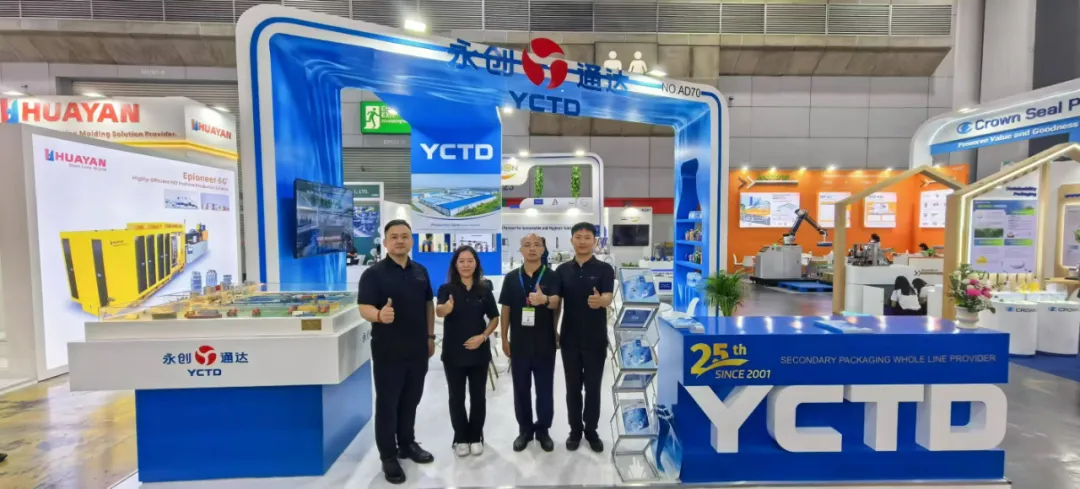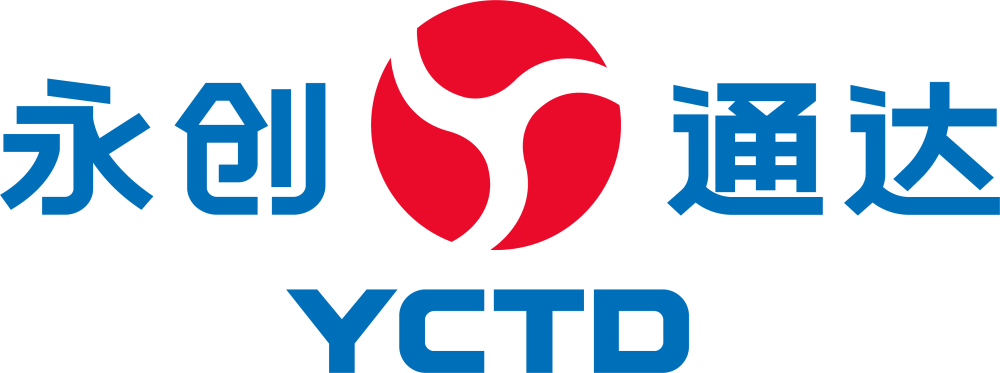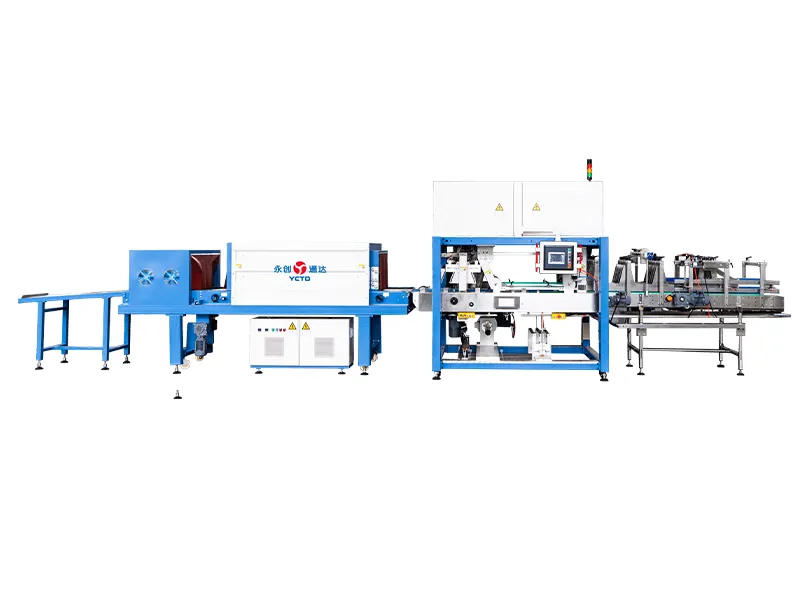Understanding Modern Packaging Automation Solutions
In today's fast-paced manufacturing environment, efficiency and precision in packaging operations are crucial for maintaining competitive advantage. At the heart of many successful production lines sits the case packer, a sophisticated piece of machinery that automates the intricate process of packaging products into secondary containers or shipping cases. This essential equipment has revolutionized how manufacturers handle their end-of-line packaging needs, dramatically improving throughput and reducing labor costs.
A case packer represents the bridge between primary product packaging and distribution-ready cases, ensuring products are safely and efficiently packed for transport. Whether handling bottles, cans, pouches, or other container types, these machines have become indispensable in industries ranging from food and beverage to pharmaceuticals and consumer goods.

Core Components and Functionality of Case Packers
Main Mechanical Systems
The case packer's sophisticated design incorporates several key mechanical components working in harmony. The infeed system manages product flow and orientation, utilizing conveyor belts and guide rails to position items correctly. The case handling mechanism prepares and positions empty cases, while the loading system precisely places products into these cases. Servo motors and pneumatic systems provide the precise movements required for each operation phase.
Advanced sensors throughout the machine monitor product position, case integrity, and overall system performance. These components work together to ensure smooth operation and minimize the risk of jams or misaligned products, which could otherwise lead to costly downtime.
Control and Automation Features
Modern case packers employ sophisticated control systems that oversee every aspect of the packaging process. PLC (Programmable Logic Controller) systems coordinate all machine functions, while HMI (Human Machine Interface) panels provide operators with real-time monitoring and control capabilities. These interfaces allow for quick format changes and troubleshooting, essential features in facilities that handle multiple product lines.
The integration of smart technology enables predictive maintenance scheduling and performance optimization. Many systems now include remote monitoring capabilities, allowing manufacturers to track efficiency metrics and address potential issues before they impact production.
Types of Case Packing Systems
Horizontal Case Packers
Horizontal case packers excel in handling products that require gentle handling or specific orientation. These machines load products from the side, making them ideal for items like bags, pouches, and delicate containers. The horizontal loading motion helps maintain product integrity and is particularly effective for flexible packaging formats.
This configuration often provides better accessibility for maintenance and cleaning, making it a preferred choice in food processing facilities where regular sanitation is mandatory. Horizontal case packers can typically handle a wide range of case sizes and styles, offering valuable flexibility for manufacturers with diverse product lines.
Vertical Case Packers
Vertical case packers utilize gravity-assisted loading, making them extremely efficient for certain applications. These machines are particularly effective when handling rigid containers like bottles, cans, and jars. The vertical loading motion can achieve higher speeds while maintaining a smaller footprint compared to horizontal systems.
The design of vertical case packers often incorporates advanced collating systems that can quickly arrange products into the desired pack pattern before loading. This configuration is especially beneficial in high-speed production environments where space optimization is crucial.
Integration and Optimization in Production Lines
Seamless Line Integration
Successful implementation of a case packer requires careful consideration of the entire packaging line's flow. The machine must seamlessly integrate with upstream equipment like fillers and labelers, as well as downstream components such as palletizers. Modern case packers feature standardized communication protocols that facilitate this integration, allowing for synchronized operation and data sharing across the entire packaging line.
Line integration also involves optimizing product flow and timing to prevent bottlenecks. This might include implementing accumulation systems or adjusting conveyor speeds to ensure steady product flow to and from the case packer.
Performance Optimization Strategies
Maximizing case packer efficiency requires ongoing attention to several key factors. Regular maintenance schedules, operator training programs, and performance monitoring systems all contribute to optimal operation. Companies often implement OEE (Overall Equipment Effectiveness) tracking to identify areas for improvement and maintain peak performance levels.
Modern case packers also benefit from advanced diagnostics and troubleshooting capabilities. These features help minimize downtime by quickly identifying and resolving issues, while also providing valuable data for continuous improvement initiatives.
Future Trends and Innovations
Technological Advancements
The evolution of case packing technology continues with the integration of artificial intelligence and machine learning capabilities. These advances enable more sophisticated product handling, improved error detection, and automated adjustment of operating parameters. Future systems will likely feature enhanced predictive maintenance capabilities and even more flexible format handling.
Sustainability considerations are driving innovations in energy efficiency and the ability to handle eco-friendly packaging materials. Manufacturers are developing case packers that can work with thinner corrugate and alternative packaging materials while maintaining high performance standards.
Industry 4.0 Integration
The movement toward smart factories is influencing case packer design and functionality. Enhanced connectivity features enable real-time performance monitoring, remote diagnostics, and integration with factory-wide management systems. This connectivity provides valuable data for optimization and planning while enabling more responsive maintenance and support.
Future developments will likely include enhanced augmented reality support for maintenance and training, as well as improved integration with automated guided vehicles and other autonomous systems within the facility.
Frequently Asked Questions
How do I determine the right case packer for my production needs?
Selecting the appropriate case packer involves analyzing several factors, including your product characteristics, required throughput speeds, available floor space, and budget constraints. Consider also your future growth plans and the flexibility needed to handle different product formats. Working with experienced equipment suppliers can help ensure you choose a system that meets both current and future requirements.
What maintenance is required for optimal case packer performance?
Regular maintenance typically includes inspecting and lubricating moving parts, checking and replacing wear items, cleaning sensors, and verifying proper alignment of guides and conveyors. Implementing a preventive maintenance schedule and keeping detailed maintenance records helps ensure reliable operation and extends equipment life.
Can case packers handle different package sizes and configurations?
Modern case packers are designed with flexibility in mind and can typically handle multiple package sizes and configurations. Many feature tool-less changeover systems and stored recipe settings for different formats. However, the specific range of sizes and configurations will depend on the machine model and design. It's important to discuss your format requirements with equipment suppliers during the selection process.

